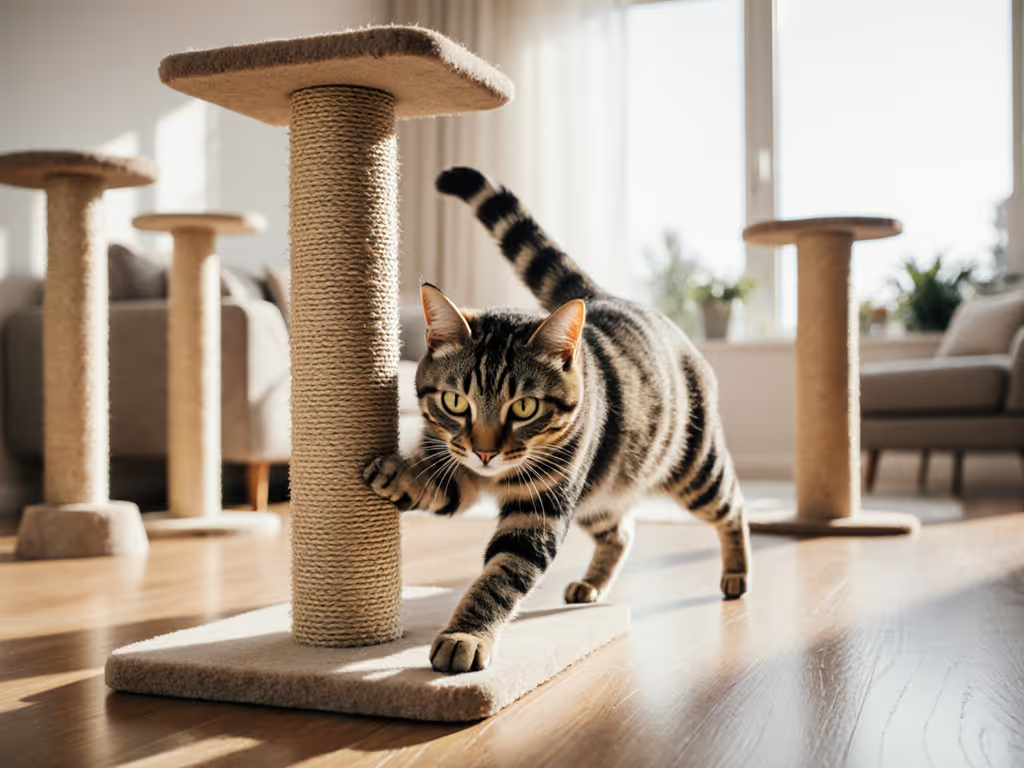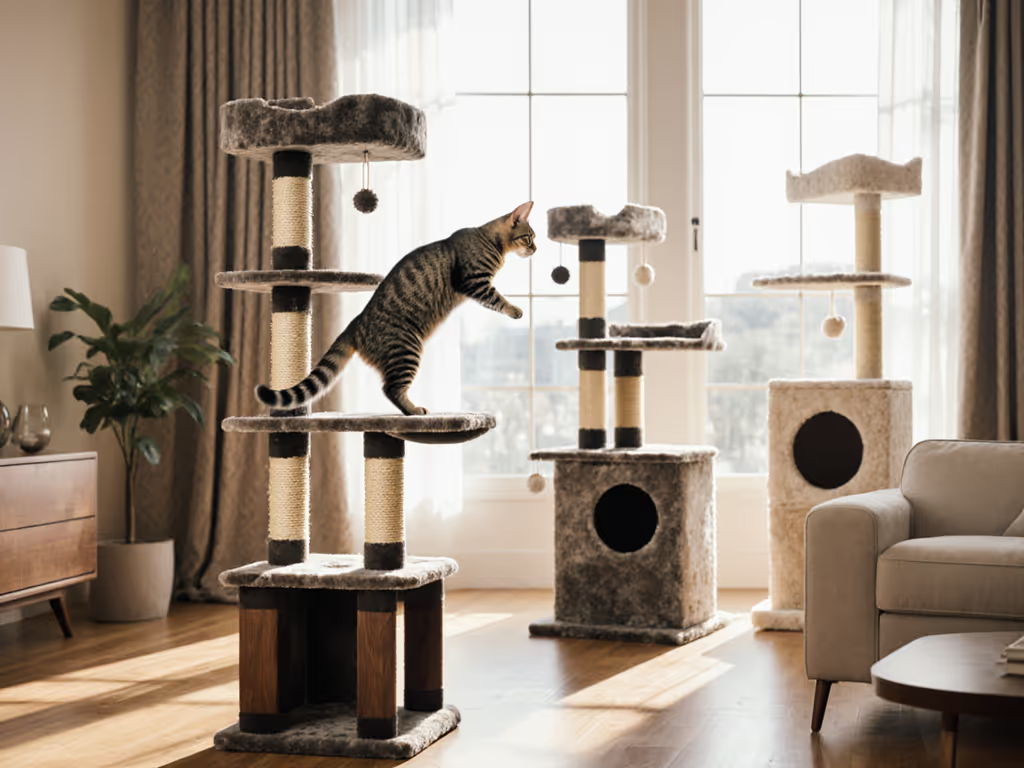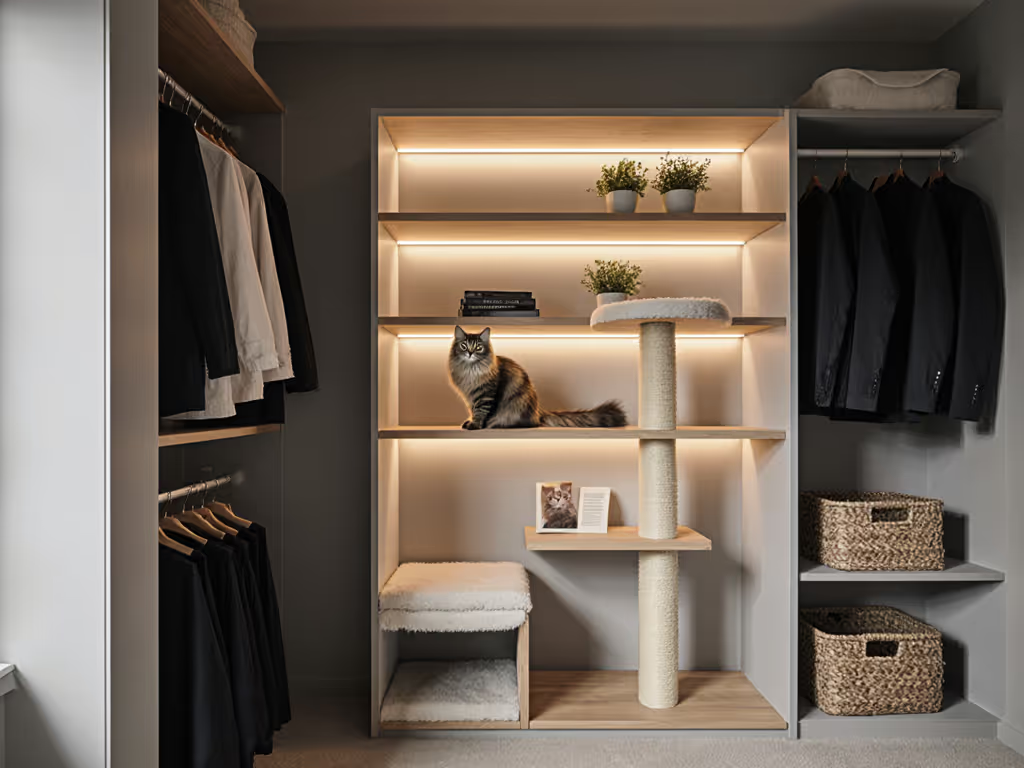
Grow Your Space: Integrated Cat Furniture With Safe Planters
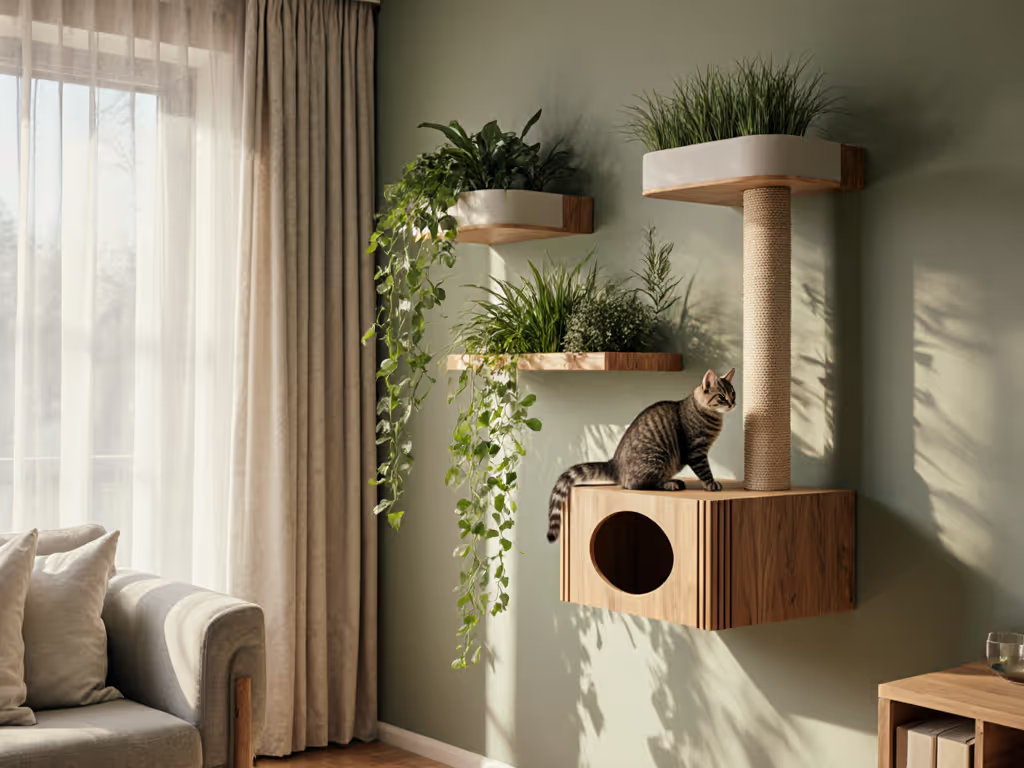
Forget compromising on cat furniture that turns your living room into a cluttered jungle gym. What if every shelf, perch, and planter actively enhanced your home while meeting your cat's deepest instincts? That's the magic of integrated plant cat furniture, where botanical cat spaces become functional art. I've seen too many cat parents choose between aesthetics and feline happiness. But after building systems from salvaged maple (and yes, thrifting sisal!), I know modular beats monolithic. Let's redesign your space so cats climb, nap, and nibble safely without sacrificing your style.
Why Your Cat Craves Botanical Integration
Cats aren't just roommates, they're vertical explorers with needs we often overlook. A sun-drenched windowsill? That's their safari outpost. A trailing pothos? A scratch-resistant rope alternative. Yet most "unique cat furniture" clumps carpeted towers in the middle of rooms, wasting prime wall real estate. This isn't just messy, it's unsafe. Wobbly bases make cats reluctant to climb high (robbing them of security), while flimsy materials shed fibers into their paws. Worst? Disposable builds that end up in landfills after a year.
Cats don't care about aesthetics, they care about function. Our job is to make function beautiful.
My first apartment taught me this. With $50 for cat gear, I turned scrap maple into a climbing wall with integrated planters. Three years later, those same shelves hold my orchids, and my cat still rockets up them at midnight. Why? Because sustainability is durability plus joy, not deprivation. When you weave in cat-safe planters, you're not just decorating. You're:
- Giving cats textural variety (sisal vs. smooth wood vs. plant fibers)
- Redirecting scratching away from furniture
- Creating snoozing spots drenched in natural light
- Adding air-purifying greenery that pleases everyone
5 Principles for Building Your Plant-Integrated Cat Furniture
Stop buying at your walls; start building with them. Here's how to design botanical cat spaces that endure:
1. Prioritize stability over height (or cost)
That 72-inch tower wobbling near your curtains? A disaster waiting to happen. Cats instinctively seek secure high vantage points, but if the structure sways, they'll avoid it. Always anchor to studs, not drywall. If you're unsure about testing and anchoring methods, see our cat furniture stability guide. I learned this after my DIY cat tree tipped during a zoomie session (thankfully, no injuries). For integrated plant cat furniture, anchor every 16 inches vertically. Wall-mounted shelves prevent tipping entirely (no floor space needed). Plus, they're modular. Add or reposition as your cats age or your space changes.
2. Choose plants that earn their keep
Not all greens are cat-safe planters. Skip lilies (toxic!) and opt for plants that serve dual purposes:
- Wheatgrass or catnip: Redirect chewing from cords or furniture
- Pothos or spider plants: Tough, trailing varieties cats chew less (they dislike the texture)
- Baby's tears: Soft carpet-like ground cover for low shelves
Pro tip: Plant in removable pots. When cats inevitably dig, you replace the soil, not the whole planter. This keeps your indoor cat shelf hygienic and plant-ready for years.
3. Build in repairable scratching zones
Scratching isn't destructive; it's biological maintenance. Your cat's furniture must accommodate this. Wrap posts in replaceable sisal rolls (thrift stores often have leftovers!), or use rough wood like maple. Smooth surfaces like ceramic pots? Perfect for nibbling but useless for claws. Position scratchers below perches, cats stretch after naps. My neighbor's salvaged maple posts still hold strong after three years because I used water-based varnish, not toxic finishes.
4. Design for your space (not Pinterest)
That $300 designer cat tree might look stunning online, but will it fit your 7-foot ceiling? Or your apartment's weird corner? Measure twice. Focus on:
- Sightlines: Cats want to watch birds or the street
- Sun exposure: South-facing windows = prime napping spots
- Traffic flow: Keep shelves away from doors to avoid startled zoomies
Modular wall systems scale infinitely. Start small, then expand. No more "one-size-fits-all" disappointment.
5. Expect (and plan for) imperfection
Cats will knock over pots. They'll dig in soil. They'll shed on everything. Build maintenance into your design:
- Use trays under planters (catches soil and hair)
- Pick washable, low-VOC finishes
- Avoid deep carpets; opt for smooth wood or replaceable sisal
This isn't about perfection. It's about creating a space where both of you thrive long-term.
Product Deep Dive: Real-World Solutions for Botanical Cat Spaces
Let's get practical. I tested two versatile products that turn walls into vibrant cat playgrounds without looking like a pet store exploded. Both solve core pain points: space waste, unsafe materials, and disposable design. Here's how they stack up for durability, cat appeal, and your sanity.
ShopLaLa Wall Planter System: The Space-Saving Workhorse

ShopLaLa Wooden Wall Planter (2-Pack)
Why it shines for cats: These aren't just planters; they're modular cat highway components. Mount the 29x29cm shelves at varied heights (18-24 inches apart) to create climbing paths. Cats love the smooth, splinter-free Finnish wood texture under their paws. I used mine to hold trailing pothos near a window perch, my cats now ignore the curtains and get safe nibbles. The carbonized finish resists scratches better than fabric-covered towers. Crucially, it anchors directly into studs via included screws (though I swapped them for longer ones (more on that below)). For renters or tricky walls, compare drill-free vs drilled mounting systems to choose the safest option.
The pragmatic reality:
- Stability: Rock-solid if anchored correctly. Critical note: The included screws are too short for most walls. Always use 3-inch drywall anchors into studs.
- Cat-proofing: Cats won't damage the wood, but knock over lightweight pots. Secure planters with non-toxic glue dots.
- Longevity: Unfinished wood means you can refinish it. After 6 months of cat traffic, mine still looks new.
- Cost math: At $24.99 for two 11.4x11.4 shelves, it's $1.07 per square inch. Compare that to carpeted cat trees ($0.30-$0.50/sq in) that shed fibers and tip over. Over 5 years? This pays for itself.
Verdict: 9/10 - A thrifty, adaptable backbone for botanical cat spaces. Just reinforce the anchors.
Window Garden Large Kitty Pot: The Joy Multiplier
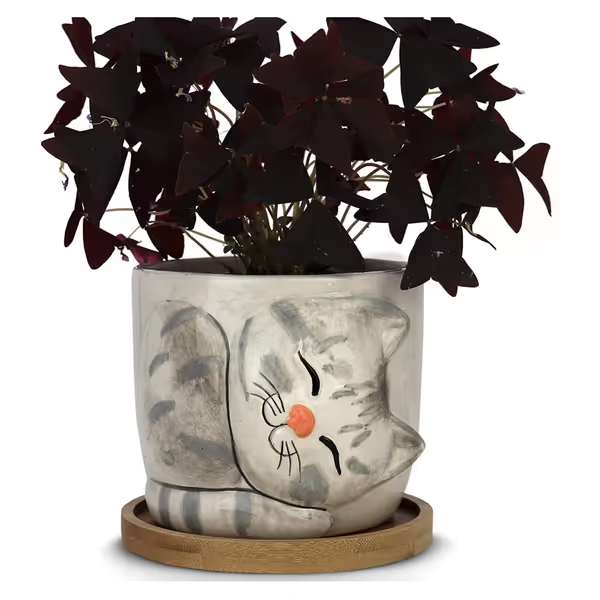
Window Garden Large Kitty Pot (Barney)
Why it shines for cats: This ceramic pot isn't just cute; it's a feline sensory station. Fill it with cat grass or wheatgrass, and watch your cat redirect chewing instincts away from your ferns. The drainage hole keeps soil healthy, and the smooth glazed interior is easy to scrub. I placed mine on a sunny window ledge (secured with museum putty!), creating a dedicated "snack zone" that keeps my cats off the main shelves. The weight (1.43 lbs) makes it stable, unlike lightweight plastic pots cats bat around.
The pragmatic reality:
- Stability: Heavy base prevents tipping, but must be secured if on open shelves. Use removable adhesive putty.
- Cat-proofing: Cats love the texture for gentle chewing. However, some report the ceramic cracks if knocked hard (always place against a wall).
- Longevity: Glazed ceramic lasts decades. Even if it chips, non-toxic paint means no health risks.
- Cost math: $19.99 for lifelong grass-growing fun. Compare to disposable cardboard cat grass kits ($8-$12 each, lasting 2-3 weeks). Break-even at 8 weeks.
Verdict: 8.5/10: A joyful, functional accent that solves destructive chewing. Place it wisely.
Your Action Plan: Start Small, Dream Big
Integrated plant cat furniture isn't about overhauling your home overnight. To keep your setup safe for years, follow our cat furniture cleaning guide. It's about spending with intention; letting materials and modularity do the work. Here's how to begin today:
- Measure your wall where cats already linger (by windows, doorways).
- Pick one zone to anchor your first shelf (aim 18-24 inches off the floor for entry-level perching).
- Add one cat-safe plant - wheatgrass is foolproof.
Within weeks, you'll see your cat using it. Then expand upward. Remember: my first build used neighbor's scrap wood and thrifted sisal. I didn't need fancy tools, just clear measurements and commitment to durability.
Final Thought: Build for the Cat You Want to Keep
That "ugly cat tree" taking over your living room? It's a symptom of outdated thinking. Integrated plant cat furniture proves your home can feel curated and cat-fulfilled. When you choose repairable parts, second-life materials, and transparent designs, you're not just buying furniture. You're investing in daily joy, for you and your cat.
Your next step: Grab a tape measure right now. Find that sun-drenched wall your cat already loves. Trace a 12x12 inch square. That's your first botanical cat space. Start there.
Modular beats monolithic. Always.

